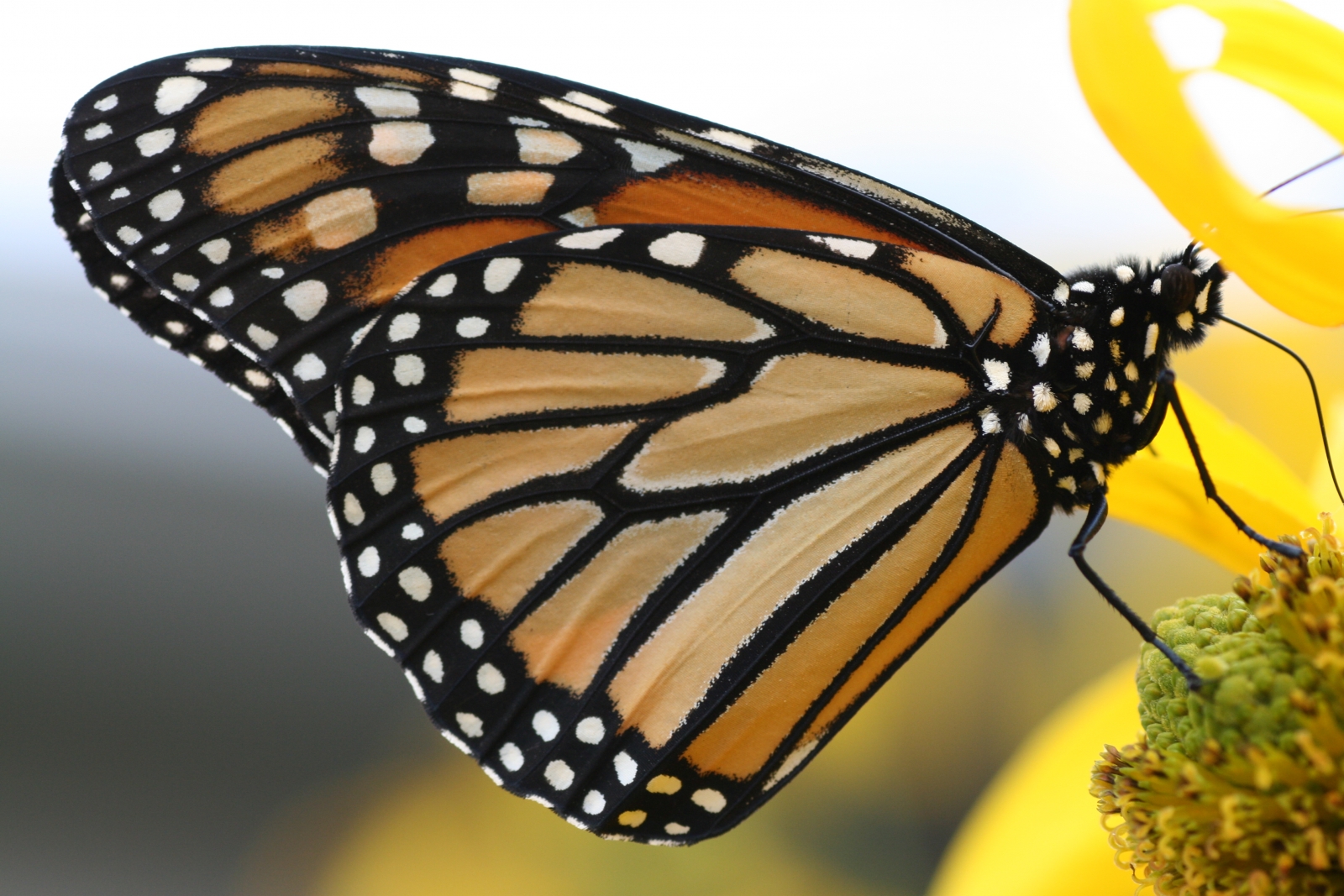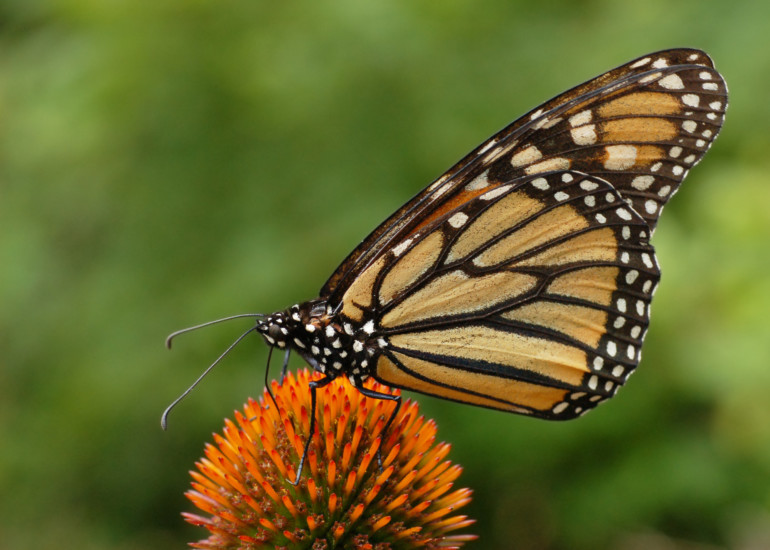Marin's monarchs inspire, urge us to watch for them and work hard for their future. Not too long ago we marked the arrival of fall with monarchs lazily arriving in September, nectaring in our gardens and then moving to coastal sites for the winter. Local conservation campaigns of the 1970's saved these precious refuges in Muir Beach, Stinson Beach and Bolinas. But now, those watching wonder, “where are they?” Unfortunately, monarch presence in Marin mirrors the precipitous decline of the western population — a sharp reduction in monarch butterfly numbers worries many and is the focus of study, conservation work plus opportunity for butterfly and pollinator gardeners. Citizen science-based studies supported by the Xerces Society document a 95 percent decline. This is shocking and requires urgent and careful action to help slow down and rebuild. Monarch butterflies themselves are not endangered, but the migration and dramatic clustering at overwintering sites is.
Please refer to the xerces.org website to learn about the large (but also imperiled) Eastern population that overwinters in the mountains of central Mexico and also find out about our local phenom of western monarchs overwintering in coastal sites like Marin, mating in late winter and then the females heading inland to find the milkweed they must locate to lay their eggs. Successive breeding generations repopulate the western states until shortening, cooler days draws the "super generation" to migrate westward for one final nectar stop before going into a form of hibernation November through February! Amazing!
We have a special role and responsibility for monarchs in Marin. We can plant nectar gardens for monarch butterflies and other pollinators and if you live in eastern Marin — think Corte Madera, Mill Valley, San Anselmo or Novato — you can plant native milkweed that will naturally die back, then, you can nourish monarchs both when they arrive in the fall, plus early arrivals may reproduce one more time (have you ever seen a monarch caterpillar much less the jade-like chrysalis….breathtaking) and maybe as they leave in the late winter! Remember: only the native milkweed and only on the east side away from the coastal zone where the monarchs must go to spend the winter safely! Of course, we know Marin gardeners practice healthy gardening, will ask more questions from CNPS or Master Gardeners, research details at xerces.org.
Why is this tragedy happening to the beautiful, iconic monarch butterfly? Extensive herbicide use, loss of milkweed habitat due to suburbia and large-scale agriculture, global climate change and GMO use — they are signals of the need to make changes. Planting a nectar garden helps. Check out xerces.org for updates on monarch butterflies from Marin’s own citizen scientist: me! I coordinate the volunteer program noting monarch arrival, cluster counts and how they're doing.
Note: Marin butterfly sites that are often listed have not had any monarchs in years. We're keeping our fingers crossed that someday monarchs will return and there will still be a healthy grove for them to hang out in.


